The Urban fabrics study as part of the Urbanization.org seminar is an attempt to analyse the different urban fabrics within a city to better understand the evolution of the city over time, the interaction of different socio-economic, cultural factions of a city, the nature of urban sprawl and the similarities or dissimilarities of urban fabrics in different cities in different parts of the world.
In case of Istanbul, a city with a very diverse and interesting history and topography, we found 10 predominant types of urban fabrics.
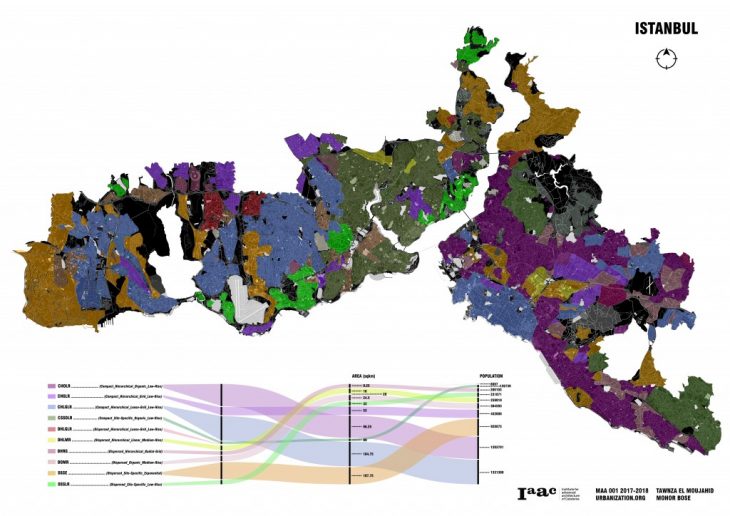
Urban fabrics in IstanbulA study into the history of the city and the fluctuating population count and densities explain better these urban fabrics and their interchangeability or static nature over time, based on whether the parts of the city are in the historic old town or the ever expanding suburbs of this 1539 sqkm city.
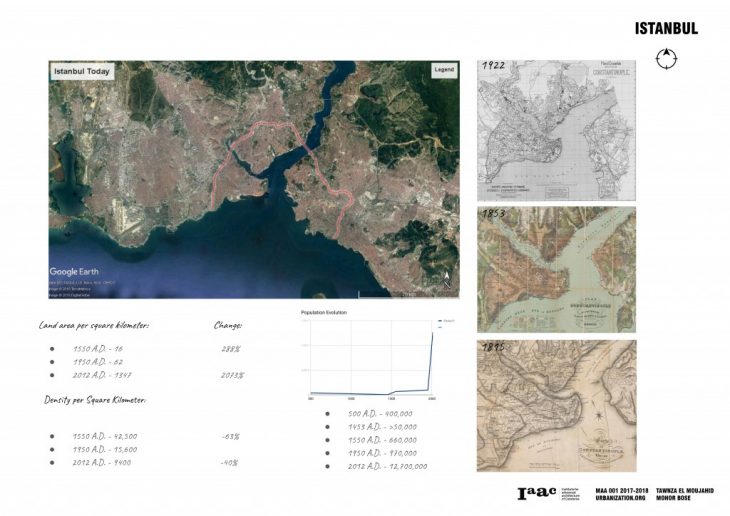
A glimpse of the changing city are and population densities over time
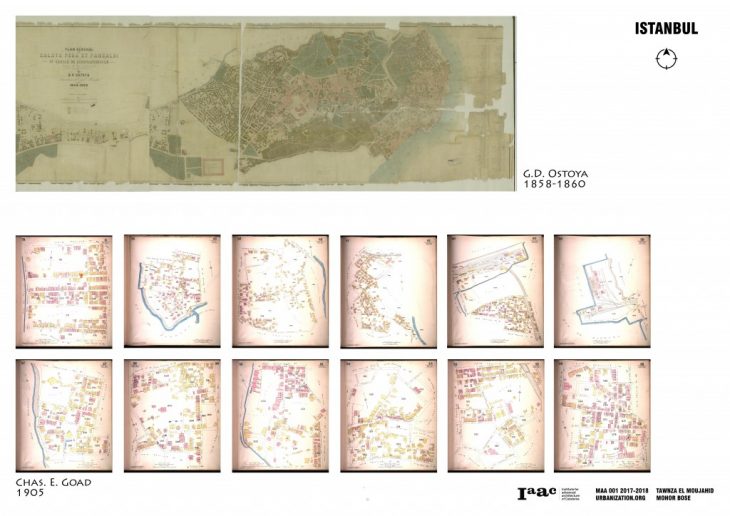
graphical and historic limitations transform these into loose grids
The 20th century saw the greatest boom in the city’s population history, but as the city grows, it spreads and the population density reduces. The newer suburbs were planned in a more organised grid-like fashion as opposed to the more organic old city. However, topographical and historical(monuments and existing road networks) restrictions translate into these evolving more as loose grids, the most common urban fabric through the city of Istanbul.
A closer look at each urban fabric:
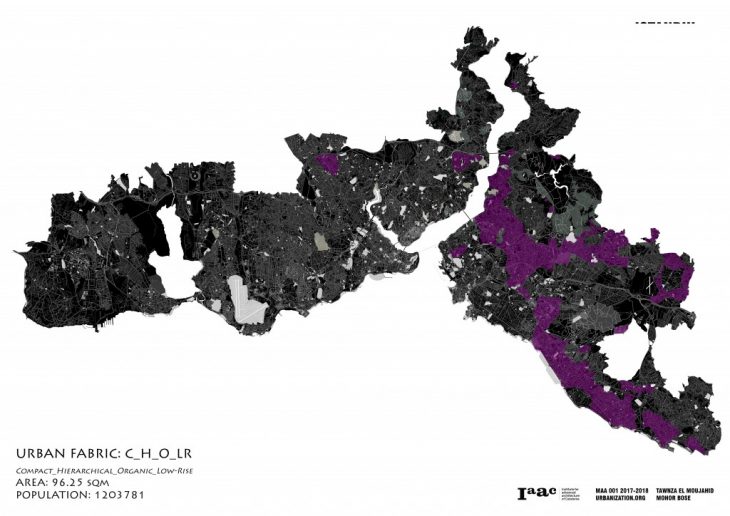
Compact_Hierarchical_Organic_Low-rise:
This is the urban fabric most dominant in the Eastern part of the city. This zone was part of the first suburbs outside of the historic Uskudar district. While most suburbs tend to grow in a more dispersed manner, this one is more compact due to the topographical barrier presented by the hills
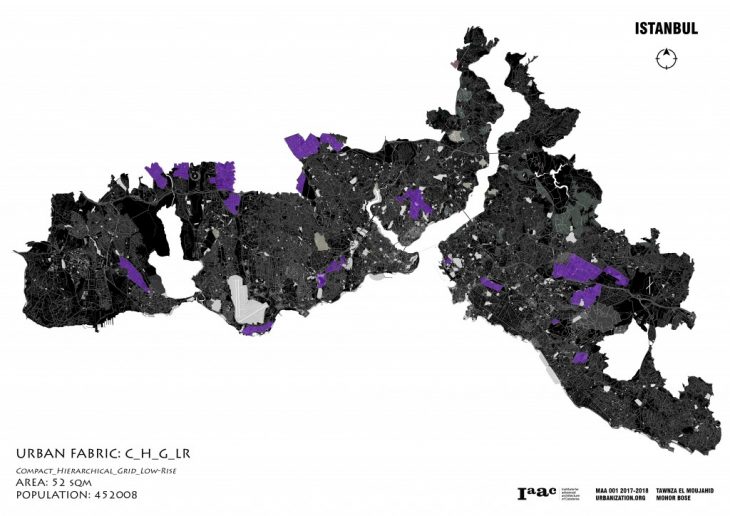
Compact_Hierarchical_Grid_Low-rise:
These are smaller pockets in the suburban areas where more organised grid planning was possible
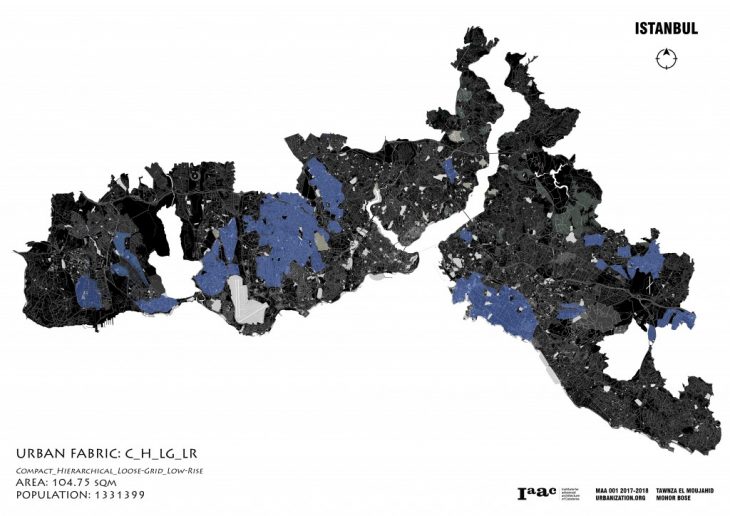
Compact_Hierarchical_Loose-grid_Low-rise:
This is the urban fabric with the highest population and the second highest area. It is also part of the first suburbs of the city, mostly lying just adjacent to the historic city neighborhood. While it is compact today, it began as a more dispersed fabric till the growing population of the city ate into the open spaces.
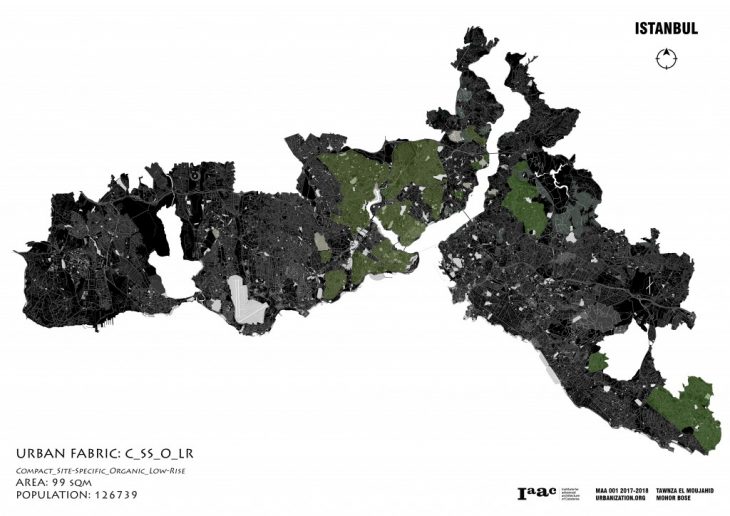
Compact_Site-Specific_Organic_Low-rise:
This urban fabric is the first one of the city. The historic city districts of Eminonu and Fatih (formerly within the city walls) are characterised by this fabric. This is a highly compact and organic fabric, bound by the coast and river. In the 1550s, the population density here was as high as 100,000 people per square mile and there were only narrow alleyways and no wide roads.
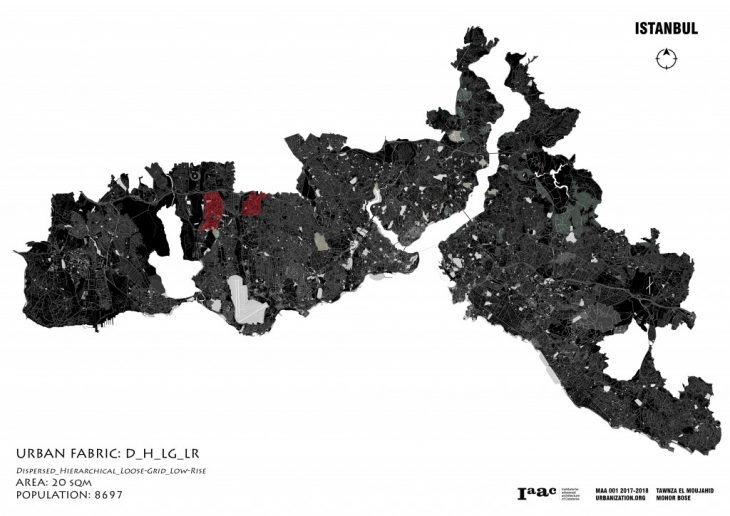
Dispersed_Hierarchical_Loose-Grid_Low-rise:
Seen in more privatized township kind of planned neighborhoods
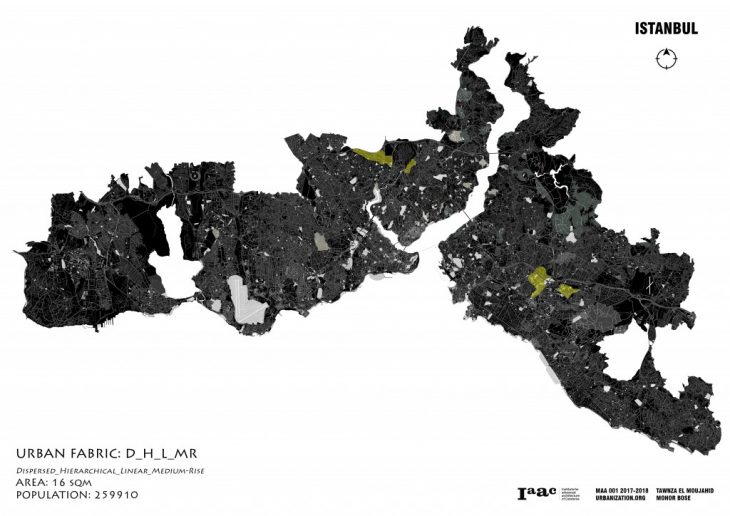
Dispersed_Hierarchical_Linear_Medium-rise:
Smaller pockets usually squeezed between two different fabrics where more medium-rise structures are visible. Mostly more commercial districts.
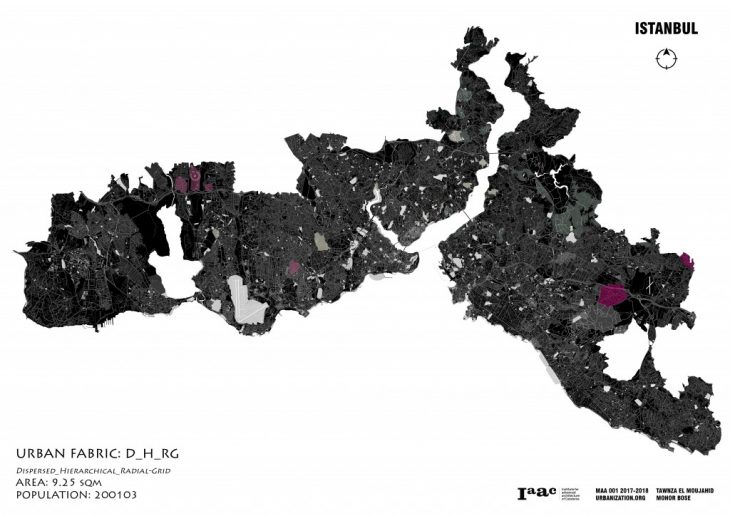
Dispersed_Hierarchical_Radial grid:
Also seen in more priviatized township kind of planned neighborhoods
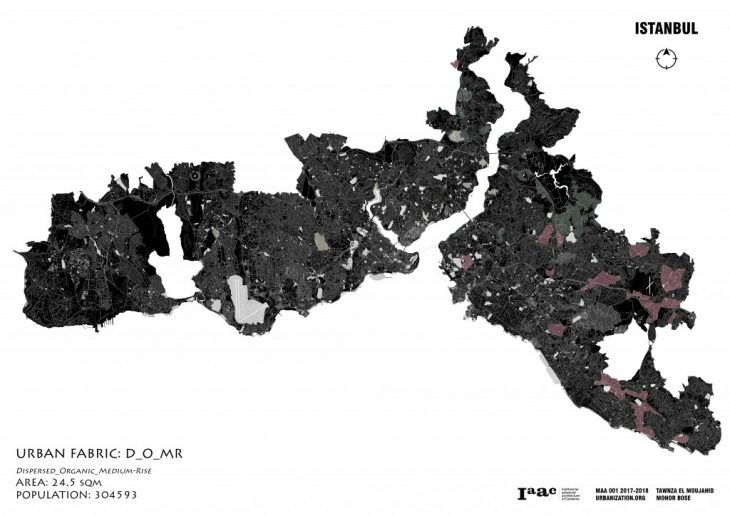
Dispersed_Organic_Medium-rise:
Newer suburban neighborhoods in the Eastern parts of the city along the contours of the hill, which is why the organic structure.
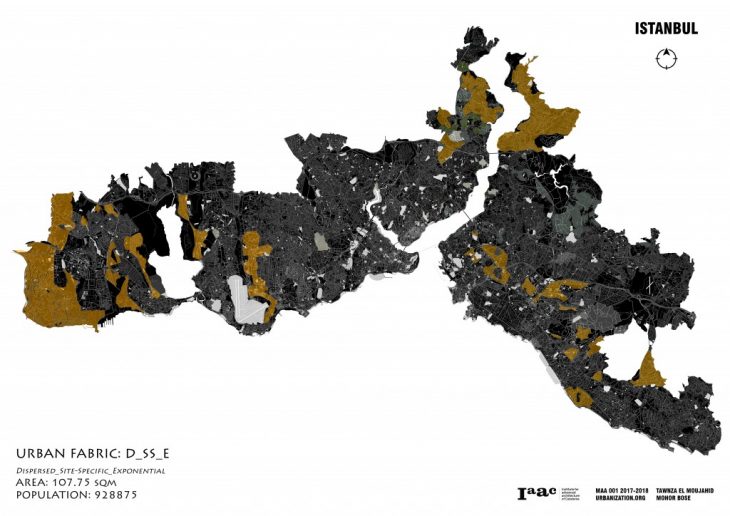
Dispersed_Site-Specific_Exponential:
Most commonly seen in the newest suburbs of the city, where more parks and open spaces can be planned and provided for.
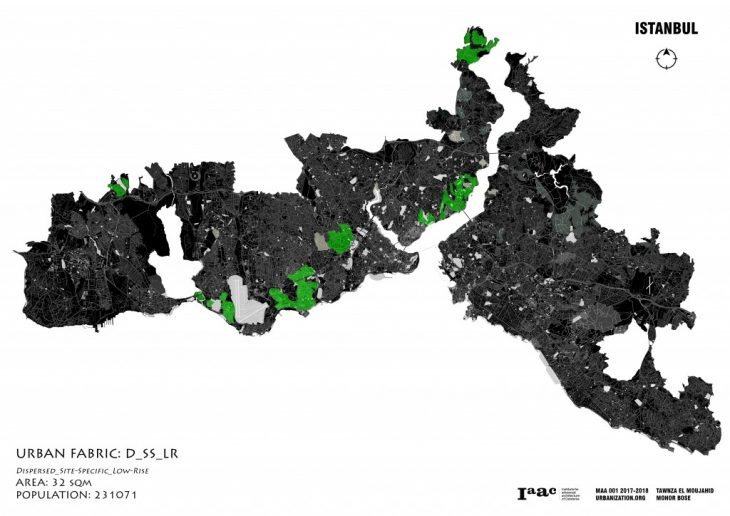
Dispersed_Site-Specific_Low-rise:
Similar to the previous fabric but in more central parts of the city. Dispersed owing to the availability of cheaper land and larger individual plots.
Inference:
Like all historic cities the core is compact and organic but all the city grows it becomes more dispersed with lower densities and more structured with grid-fashion new neighborhoods. With time the suburbs also transform from dispersed to compact as population and city size grows and land value increases and parceling of land becomes common. The most predominant Urban Fabric (C_H_LG_LR) is of this type.
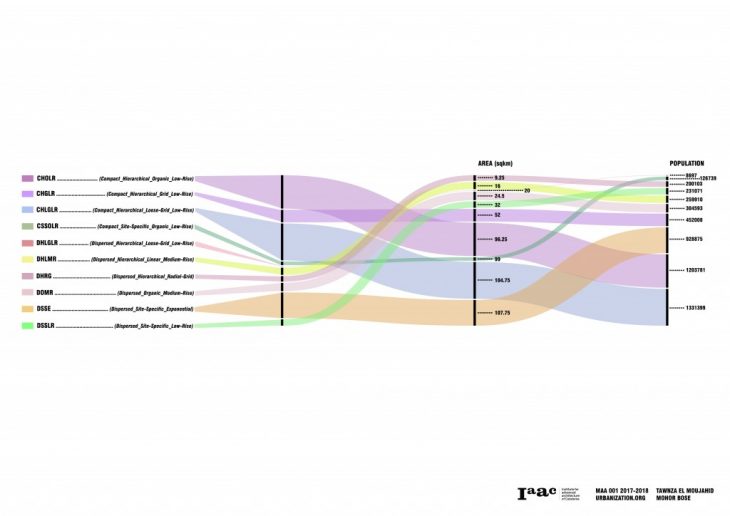
Area and Population of the different Urban Fabrics
A detailed study of the C_H_LG_LR fabric:
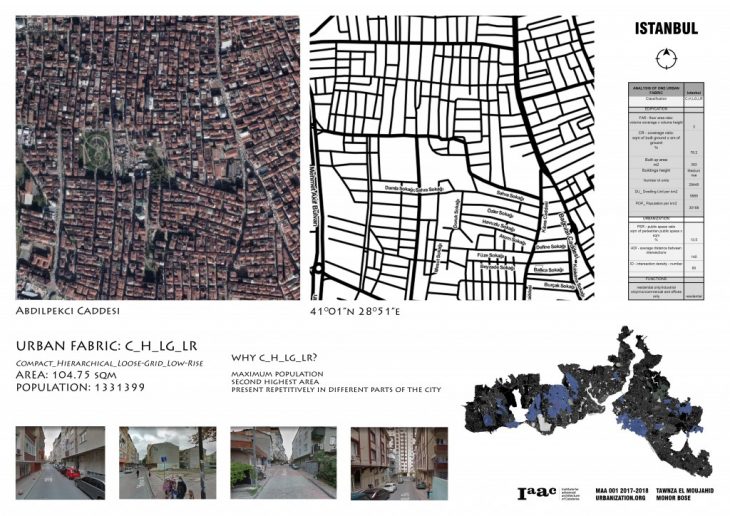
Urban Fabrics of Istanbul is a project of Iaac, the Institute for Advanced Architecture of Catalonia, developed in the Urbanization.org seminar in the academic year of 2017-2018.
Students:
Mohor Bose
Tawnza El Moujahid
Faculty:
Vincente Guallart
Honorata Grzesikowska
Marta Mila